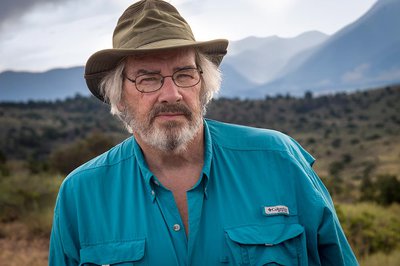
Attention, dinosaur fans: Paleontologist Jack Horner says it might be possible to make a living dinosaur, and he’s coming to Eugene April 6 to explain how it’s done as part of a University of Oregon seminar series on “de-extinction.”
Horner, a paleontology professor at Montana State University, spends most of his time digging up and studying dinosaurs — he’s best known as the inspiration for Dr. Alan Grant, a paleontologist from Jurassic Park played by Sam Neill. In 2009, Horner wrote the book How to Build a Dinosaur, in which he describes how to turn a chicken into a dinosaur. Because birds evolved from dinosaurs, bird genes contain ancestral information and codes that can be reverse-engineered to bring back dinosaur-like characteristics, including long tails, short arms and snouts instead of beaks.
At the UO, Horner plans “to talk about our efforts to bring dinosaurs back, and the current dinochicken project,” he writes EW from Montana. By tweaking a chicken’s genes, he says, we can “learn what characteristics are turned on or off by switching genes on or off.”
Horner’s “chickenosaurus” project is an example of de-extinction, a new field of study that focuses on using what we know about genetics to bring back extinct species.
Another facet of de-extinction explores the idea of using preserved DNA and cloning to resurrect species that no longer exist, such as the woolly mammoth.
“The possibilities and the moral and practical implications of this exciting new field are just now being explored, making this field ripe for talks on the cutting edge of science,” says Christine O’Connor, a graduate student in the UO’s Institute of Ecology and Evolution who helped organize the seminar with other evolutionary biology and ecology graduate students.
The next speaker in the series is Hank Greely, a professor at Stanford Law School — on April 27, he’ll discuss the ethics of resurrecting species that succumbed to extinction. On May 4, Hendrik Poinar, a Canadian anthropologist and geneticist, rounds out the series with a presentation on bringing woolly mammoths back to life.
Horner says in his talk, he’ll also bring up the possibility of creating a mythical creature: “I’ll explain in detail how we could make a living unicorn,” he says. But, he adds, “I’m not going to give it away before my talk.”
Jack Horner speaks 7 pm Wednesday, April 6, at 150 Columbia Hall on the UO campus. The talk is free and open to the public.